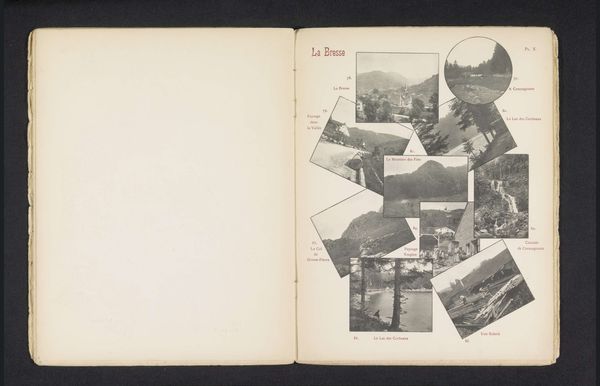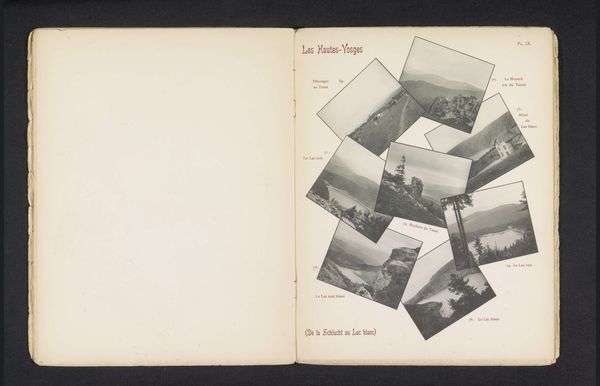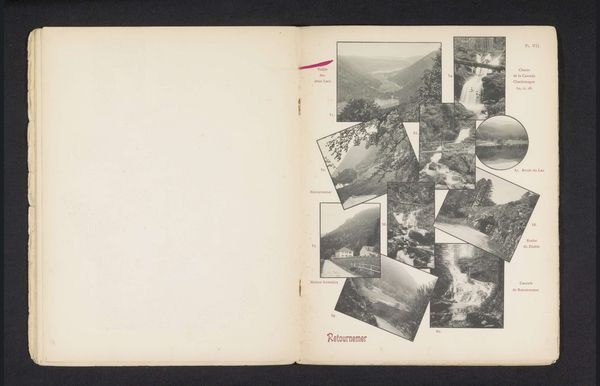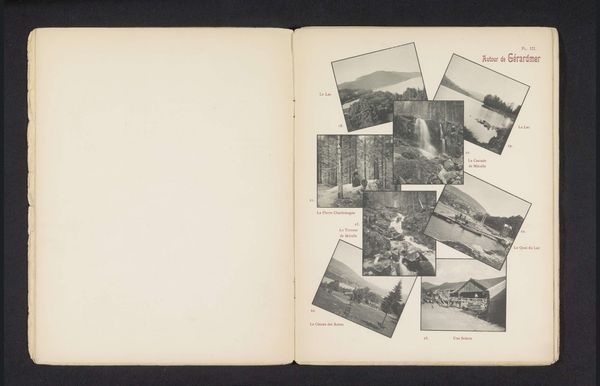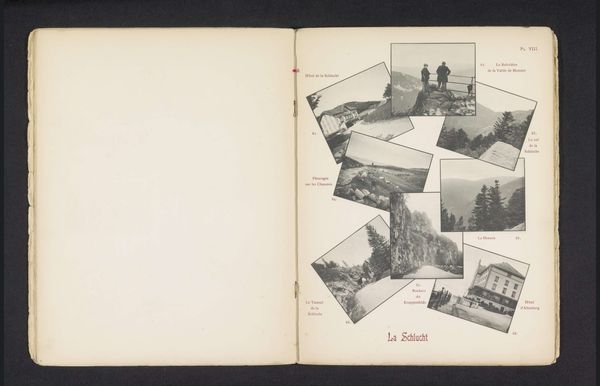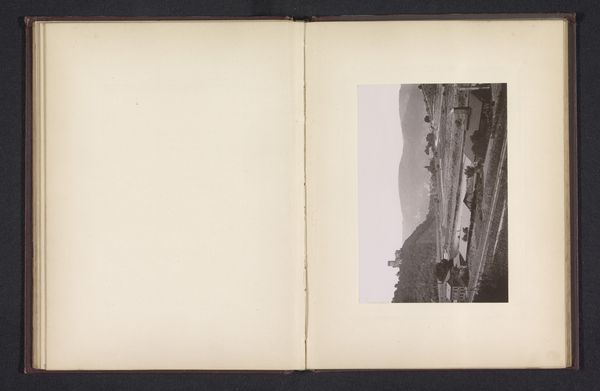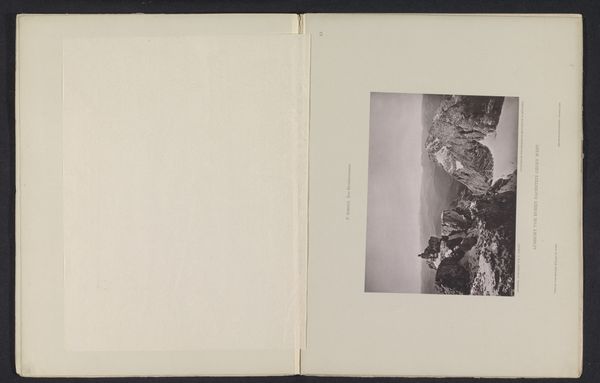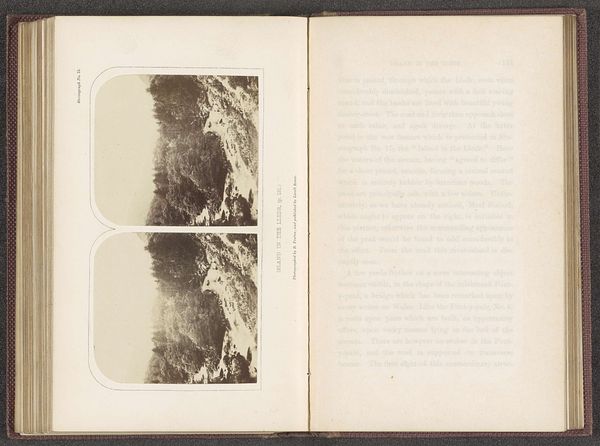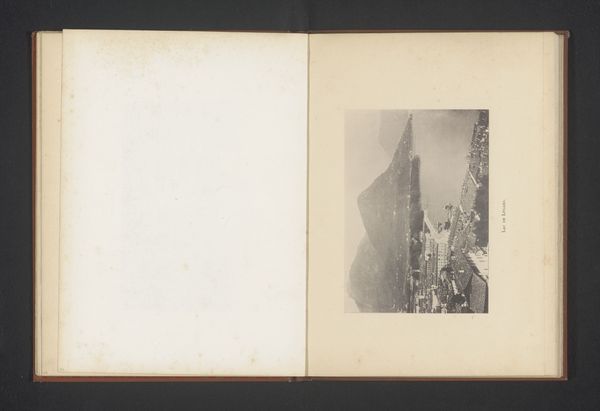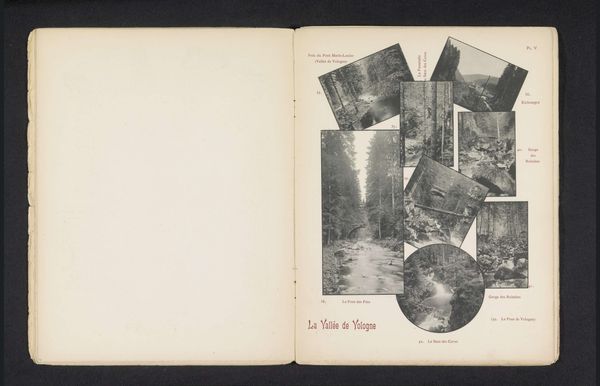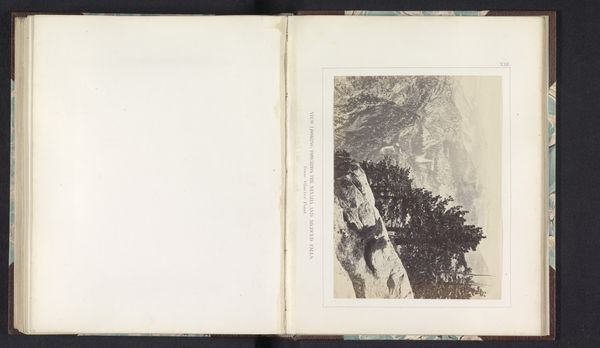
#
aged paper
#
homemade paper
#
hand drawn type
#
waterfall
#
river
#
personal sketchbook
#
hand-drawn typeface
#
fading type
#
thick font
#
sketchbook drawing
#
sketchbook art
#
historical font
Dimensions: height 325 mm, width 250 mm
Copyright: Rijks Museum: Open Domain
Curator: Here we have “Ten Images of the Area Around Le Valtin et le Rudlin,” by A. Thiriat, dating from before 1898. It presents itself as a page from a personal sketchbook. Editor: The faded quality and monochromatic palette certainly give it an antique feel. The overlapping images create a dynamic, almost collage-like effect, don’t you think? Curator: Indeed. The arrangement draws attention to the contrasts and commonalities within the landscapes depicted. Note the consistent use of geometric shapes. The image blocks, the sharp lines of the mountains, the circular frame of the figures near the lower right. It structures the eye's movement. Editor: I find myself considering the political and social contexts of late 19th-century France. How did this region experience urbanization? Was this presentation a conscious selection of curated scenery versus lived experience? Curator: The visual organization invites closer inspection of individual components in relation to the whole. Each smaller landscape feeds into an understanding of the geography being documented by Thiriat. Editor: True. Looking closely at that waterfall scene and its placement—we must also consider whose landscapes get immortalized in art. Did Thiriat depict an unbiased portrait? Curator: Semiotically, water might indicate the perpetual nature of beauty and how nature contrasts human transience. The drawing method captures light and volume without relying upon color contrast alone. Editor: Right, that reminds us that the construction of these landscape images served colonial projects too. It’s not solely an innocent rendering of nature; this artistic decision also validates and promotes specific perceptions about land use. Curator: Regardless, considering its composition and careful execution reveals how even the mundane records are capable of showcasing compositional strategies of an image maker operating before mechanical reproduction had its heyday. Editor: I agree. We are reminded through Thiriat’s images that artistic expression always leaves echoes within societal movements that dictate the trajectory of historical narrative and how landscapes can reflect historical movements. Curator: Well, this visual survey provided a look not only at composition, but how a visual structure communicates the complexity underlying how we see and comprehend the land around us. Editor: Precisely, from decoding signs to seeing these scenes embedded within a much wider cultural matrix and reminding ourselves always that landscape art participates in, as well as reflects reality.
Comments
No comments
Be the first to comment and join the conversation on the ultimate creative platform.
